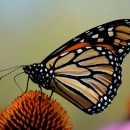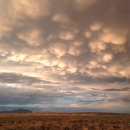States
UtahUtah Climate Resilience Projects for Mesic Habitat Restoration and Enhancements
| Funding Year | Amount | Location |
|---|---|---|
| FY22 | $475,453 | Juab, Tooele, Duchesne, Carbon, Sanpete, Utah, Iron, Rich counties, Utah |
| FY23 | $250,000 | Juab, Tooele, Duchesne, Carbon, Sanpete, Utah, Iron, Rich counties, Utah |
| FY24 | $75,000 | Juab, Tooele, Duchesne, Carbon, Sanpete, Utah, Iron, Rich counties, Utah |
| FY25 | $365,710 | Juab, Tooele, Duchesne, Carbon, Sanpete, Utah, Iron, Rich counties, Utah |
Project Description
This project will support targeted core areas within sagebrush sagebrush
The western United States’ sagebrush country encompasses over 175 million acres of public and private lands. The sagebrush landscape provides many benefits to our rural economies and communities, and it serves as crucial habitat for a diversity of wildlife, including the iconic greater sage-grouse and over 350 other species.
Learn more about sagebrush ecosystem habitat restoration on willing private lands in Utah. Enhancement and restoration actions will include invasive annual grass and noxious weed treatments, seeding, planting, fence construction with grazing management, erosion control, and natural stream/hydrology restoration.
Partners
Utah Watershed Restoration Initiative, Utah Blue Ribbon Fisheries Advisory Council, Utah Division of Water Quality, Utah Grazing Improvement Program, Trout Unlimited, Utah Habitat Council, BLM, NRCS, Utah Division of Wildlife Resources/Department of Natural Resources, U. S. Forest Service




